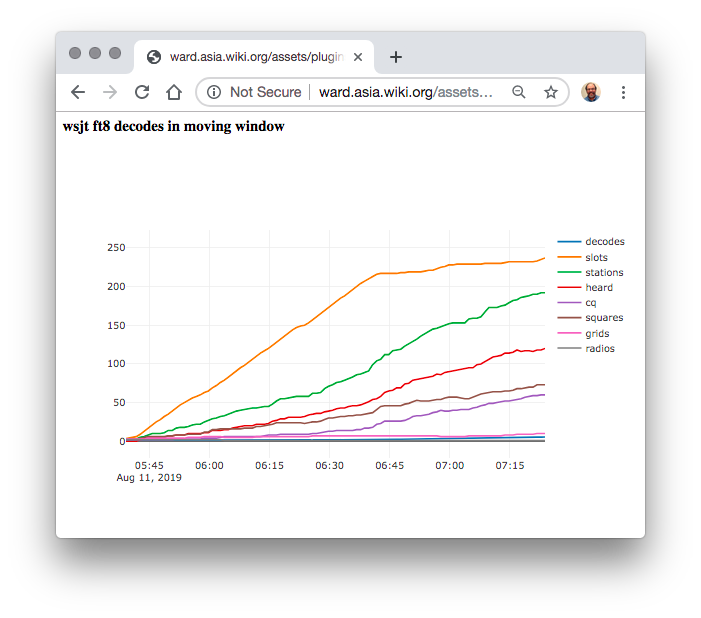We count events to quantify the activity reported from digital ham radio receivers. We find ourselves trading off statistical properties for temporal resolution.
Our first approach was to save the most recent 1000 events. This made the window of time we were observing traffic dependent. The more traffic, the smaller window. When traffic dwindled the window enlarged to the point of being deceptive.
Our new approach is to retain one hour of events. This is long enough to get useful counts even when events trickle in. But an hour provides a blurry view of changes over time when sudden circumstances arise.
Decoding, buffering and dataloging occurs on three different computers that have not been synchronized in their recording. The aperture blur conceals clock beats that would otherwise be visible.

Consider this kink in the slots curve at 6:40 in the morning. Band activity resumed at 5:40 after an hour of inactivity emptied the buffer. The buffer fills at one pace for one hour without abatement. Then the oldest slots start disappearing leaving a much reduced net growth rate towards the asymptote of 240 slots in an hour. The slope discontinuity is an echo of the abrupt start an hour earlier, an aperture effect.
.
The lense improves on the pinhole by collecting more light but introduces blur outside of increasingly narrow depth of field. See Photographic Metaphor
I may not use the therm "aperture" correctly but I am close. wikipedia ![]()